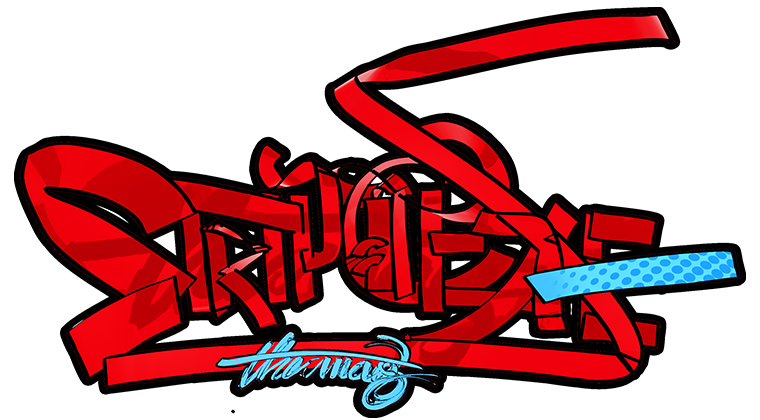A Sketcher of Ideas: Dave McKean
When one thinks of a comic book panel, one imagines colorful, snappy images and uniform text in neat speech bubbles. Contrary to popular style, McKean’s fractured artwork is a chameleon that morphs from paintings and photographs to maps, posters and blurred pencil lines, taking you through a labyrinth of memories, belief systems, and interpretations. The lettering that accompanies his art isn’t bound by any rules; several fonts, colors and sizes fill speech boxes, or are free verse splayed across a page. He explains how pencil drawings can convey a different message than heavy black ink, and smooth line drawings aren’t the same as jagged angular ones.

McKean’s most important work would be the Sandman covers which, curiously, were created without Photoshop and before he owned a computer. They consist of actual photographs scaled down to cover size and juxtaposed with articles from everyday life. He created interesting visuals by moving objects over the surface of a photocopier, shining lights into it, playing around with it. He added gemstones, butterflies, a broken door, antiques, driftwood, leaves, sand, and articles of various textures onto a surface painted with acrylic, scanning the entire thing to create a digital print that blended fantasy and reality. He even used a lamb’s heart in a block of resin that he received from a fan. He describes his Sandman covers as “a window of slightly surreal, melancholy, thoughtful imagery.”

The Tragical Comedy or Comical Tragedy of Mr. Punch starts off with dark, melancholic panels of an ice-cold beach at dawn. It tells the tale of old family secrets seen through the eyes of a young boy who spends the summer at his grandfather’s amusement arcade, an unwitting spectator of the gruesome puppet show Mr. Punch, a psychopath who throws his baby out the window and kills his wife, a policeman, a ghost, and finally, the Devil himself. Mr. Punch is constructed of memories stitched jaggedly together, much the same as we remember our own early childhood; the ugly papier-mâché puppets haunt you for posterity.

Batman: Arkham Asylum features shadowy drawings of Batman against rich, vivid portraits of The Joker. McKean gives us one of the most disturbing versions of The Joker ever. Batman’s dialogues are in black speech bubbles, while The Joker speaks in standalone red letters that emphasize his ruthlessness: a twisted personality who “creates himself every day, sees himself as the lord of misrule, and the world as a theatre of the absurd.”

Signal to Noise is a story about a dying 49-year-old filmmaker who decides to make one last film before his death. In keeping with the plot, the panels of this book are shrouded in shadows, with a mostly black/blue/grey/white color scheme. One page stands out – when he tells a woman that he is dying, and she says the usual clichéd things about doctors making mistakes, there are new treatments every day, is there anything she can do, she’s so very sorry – all this “noise” is depicted by a careless pile of transparent photos strewn over each other. When he reads his script, the panels show sketches of his hands interspersed with photographs of an actual paper script.

Violent Cases is a tale of a boy and his relationship with his father, who dislocated his arm and then took him to an osteopath who knew the American Gangster Al Capone. The tale switches back and forth from present to past in murky, raw, skeletal pencil sketches.
McKean has illustrated children’s books, too. He uses a real-life object – his son’s stuffed toy pig – alongside bottles of strawberry jam in The Wolves in the Walls. In this story about a little girl who hears wolves behind the walls in her house, the characters are depicted using computer graphics and photographs. Another favorite is Coraline, where an unloved girl looks for warmth from her parents and instead stumbles upon an “Other Mother” and “Other Father” behind a forbidden locked door. They will let her stay as long as she wants on the condition that she replaces her eyes with buttons to match theirs, which makes for twisted, macabre drawings.

A lot of McKean’s work is hieroglyphic mixed media – a pictographic representation of an idea, with few or no words to describe it – textures, sensory perception, nightmarish undertones and flashes of memory. Such is the multi-faceted dreamscape of Dave McKean, sketcher of ideas; ideas which, in the eternal words of Alan Moore, are bulletproof.
by Ulfet Tirmizi
Ulfet is a lotus-eater by day and subtitle editor for Hollywood by night. An amateur pizza chef and a weaver of dreamcatchers, she has a special proclivity for cats, lemon tarts, Doge, freshly-laundered bedsheets and the smell of permanent markers.

